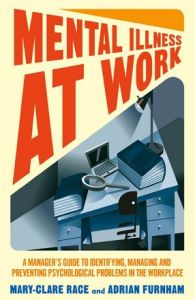Melden Sie sich bei getAbstract an, um die Zusammenfassung zu erhalten.

Melden Sie sich bei getAbstract an, um die Zusammenfassung zu erhalten.
Mary-Clare Race and Adrian Furnham
Mental Illness at Work
A Manager’s Guide to Identifying, Managing and Preventing Psychological Problems in the Workplace
Palgrave Macmillan, 2014
Was ist drin?
You can help your employees prevent mental health issues and manage those who struggle with them.
Recommendation
Staff members who underperform, torpedo projects, undermine office morale, violate legal or moral boundaries, or approach their work so carelessly that they get fired may be struggling with some form of mental illness. Psychologists Mary-Clare Race and Adrian Furnham help managers spot challenging mental issues and deal with them effectively. They demystify many mental health diagnoses and offer useful advice about how to work with and manage employees who have mental health issues. Race and Furnham do tend to describe people by their mental health condition, though best practice generally calls for using terms like “people with schizophrenia’ rather than “schizophrenics,” to highlight the affected people’s humanity, not their condition. However, most of the suggestions here are sound and practical. getAbstract finds the information thorough and very helpful, particularly for managers who are unfamiliar with mental illness.
Summary
About the Authors
Mary-Clare Race is a psychologist focusing on human behavior. Adrian Furnham is the author of more than 80 books and teaches psychology at University College London.




























Comment on this summary
This is completely wrong. Who put this type of mockery in this abstract? Stunned.